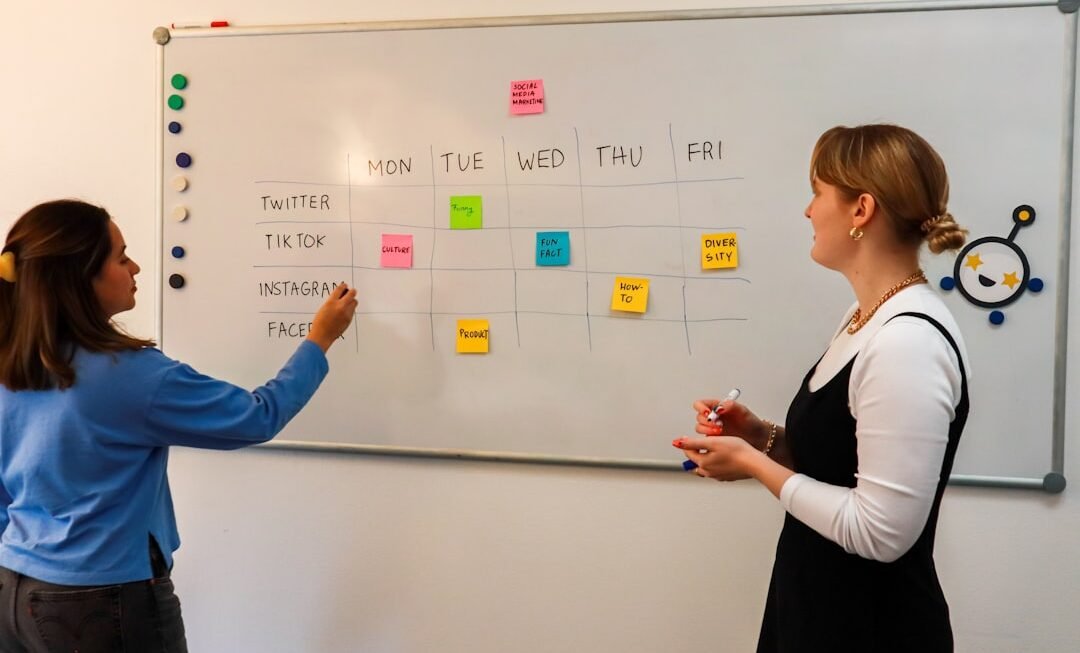In recent years, the educational landscape has undergone a significant transformation, largely driven by technological advancements. Among these changes, microlearning has emerged as a prominent method of delivering education, particularly in corporate training and professional development. Microlearning refers to the practice of breaking down complex information into smaller, digestible units that can be consumed quickly and efficiently.
This approach aligns perfectly with the fast-paced nature of modern life, where individuals often struggle to find time for traditional learning methods. The rise of artificial intelligence (AI) has further accelerated this trend, enabling more personalized and adaptive learning experiences that cater to individual needs. The integration of AI into microlearning platforms has revolutionized how learners engage with content.
AI algorithms can analyze user behavior, preferences, and performance data to tailor learning experiences that are not only relevant but also engaging. This personalization is crucial in an age where learners are inundated with information and have limited attention spans. By leveraging AI, microlearning can provide targeted content that addresses specific knowledge gaps or skills deficiencies, making the learning process more efficient and effective.
As organizations seek to enhance employee training and development, the combination of microlearning and AI presents a compelling solution that meets the demands of contemporary learners.
Key Takeaways
- Microlearning is on the rise in the age of AI, offering learners quick and targeted educational content.
- AI is revolutionizing the delivery of bite-sized education by personalizing learning experiences and providing real-time feedback.
- The benefits of microlearning for busy learners include increased engagement, retention, and the ability to fit learning into busy schedules.
- Implementing AI-powered microlearning in corporate training can lead to more efficient and effective employee development.
- Overcoming challenges in microlearning and AI integration requires careful planning, investment in technology, and addressing privacy and security concerns.
- Personalizing learning with AI in microlearning platforms can lead to more tailored and effective educational experiences.
- The future of microlearning and AI in education looks promising, with continued advancements in technology and a focus on personalized, on-demand learning.
- Tips for creating effective microlearning content with AI include keeping it short and focused, using interactive elements, and leveraging AI for personalized recommendations and feedback.
How AI is Revolutionizing the Delivery of Bite-Sized Education
AI is fundamentally changing the way bite-sized education is delivered by enabling adaptive learning environments that respond to the unique needs of each learner. Traditional educational models often rely on a one-size-fits-all approach, which can leave many learners disengaged or overwhelmed. In contrast, AI-driven microlearning platforms can assess a learner’s progress in real-time and adjust the content accordingly.
For instance, if a learner struggles with a particular concept, the system can provide additional resources or alternative explanations to reinforce understanding.
Moreover, AI enhances the interactivity of microlearning experiences.
Through natural language processing and machine learning, AI can facilitate conversational interfaces that allow learners to ask questions and receive instant feedback. For example, chatbots integrated into microlearning platforms can guide users through complex topics, providing explanations and resources tailored to their inquiries. This interactive element not only makes learning more engaging but also fosters a sense of autonomy among learners, empowering them to take charge of their educational journeys.
As a result, AI is not just augmenting microlearning; it is redefining how knowledge is acquired and retained in an increasingly digital world.
The Benefits of Microlearning for Busy Learners
Microlearning offers numerous advantages for busy learners who often juggle multiple responsibilities, such as work, family, and personal commitments. One of the most significant benefits is its flexibility; learners can access bite-sized content at their convenience, whether during a lunch break, while commuting, or in between meetings. This on-demand access allows individuals to fit learning into their schedules without the need for extensive time commitments.
For example, a professional might spend just five minutes reviewing a short video or completing a quick quiz on a relevant topic, making it easier to integrate continuous learning into their daily routine. Additionally, microlearning caters to the short attention spans prevalent in today’s fast-paced society. Research indicates that learners retain information better when it is presented in small chunks rather than lengthy sessions.
By focusing on specific topics or skills in brief intervals, microlearning helps reinforce knowledge retention and application. For instance, a sales team might engage in daily five-minute training sessions focused on different aspects of customer engagement, leading to improved performance over time. This method not only enhances learning outcomes but also fosters a culture of continuous improvement within organizations.
Implementing AI-Powered Microlearning in Corporate Training
The implementation of AI-powered microlearning in corporate training requires a strategic approach that aligns with organizational goals and learner needs. First and foremost, companies must identify the specific skills or knowledge areas that require enhancement among their workforce. This assessment can be conducted through surveys, performance reviews, or skills gap analyses.
Once these areas are identified, organizations can curate or develop microlearning content that addresses these needs while leveraging AI tools for personalization and adaptability. Furthermore, organizations should invest in robust microlearning platforms that incorporate AI capabilities. These platforms should offer features such as analytics dashboards to track learner progress and engagement metrics.
By analyzing this data, companies can gain insights into which content resonates most with employees and where additional support may be needed. For example, if analytics reveal that employees consistently struggle with a particular module, organizations can adjust the content or provide supplementary resources to enhance understanding. This data-driven approach not only optimizes training effectiveness but also demonstrates a commitment to employee development.
Overcoming Challenges in Microlearning and AI Integration
Despite its many advantages, integrating microlearning with AI is not without challenges. One significant hurdle is ensuring that the content remains relevant and high-quality. As organizations rush to adopt new technologies, there is a risk of producing subpar materials that fail to engage learners effectively.
To mitigate this risk, companies must prioritize content curation and development processes that involve subject matter experts who can ensure accuracy and relevance. Additionally, regular updates should be scheduled to keep content aligned with industry trends and organizational changes. Another challenge lies in fostering a culture that embraces microlearning and AI technologies.
Employees may be resistant to change or skeptical about the effectiveness of new learning methods. To address this issue, organizations should invest in change management strategies that communicate the benefits of microlearning and AI clearly. Providing training sessions or workshops that demonstrate how these tools can enhance personal development may help alleviate concerns and encourage adoption.
By creating an environment where continuous learning is valued and supported, organizations can overcome resistance and fully leverage the potential of microlearning and AI.
Personalizing Learning with AI in Microlearning Platforms
Personalization is one of the most powerful features of AI in microlearning platforms. By analyzing data from user interactions, AI algorithms can create tailored learning paths that align with individual preferences and performance levels. For instance, if a learner consistently excels in certain areas but struggles with others, the platform can adjust its recommendations accordingly.
This level of customization ensures that each learner receives content that is not only relevant but also challenging enough to promote growth. Moreover, AI can facilitate personalized feedback mechanisms that enhance the learning experience further. Instead of generic assessments, learners can receive insights based on their specific interactions with the content.
For example, an AI-driven platform might highlight areas where a learner performed well while also suggesting targeted resources for improvement in weaker areas. This immediate feedback loop fosters a sense of accountability and encourages learners to take ownership of their educational journeys. As personalization becomes increasingly sophisticated through AI advancements, microlearning will continue to evolve into an even more effective educational tool.
The Future of Microlearning and AI in Education
The future of microlearning combined with AI holds immense potential for transforming education across various sectors. As technology continues to advance, we can expect even more innovative applications that enhance learning experiences. For instance, virtual reality (VR) and augmented reality (AR) could be integrated into microlearning modules to create immersive environments where learners can practice skills in realistic scenarios.
This experiential learning approach could significantly improve retention rates and practical application of knowledge. Additionally, as AI becomes more adept at understanding human behavior and preferences, we may see even greater levels of personalization in microlearning experiences. Future platforms could utilize predictive analytics to anticipate learner needs before they even arise, offering proactive support and resources tailored to individual trajectories.
This shift towards anticipatory learning could revolutionize how education is delivered, making it more responsive and aligned with real-world demands. As we look ahead, the synergy between microlearning and AI will undoubtedly shape the future landscape of education.
Tips for Creating Effective Microlearning Content with AI
Creating effective microlearning content requires careful consideration of both instructional design principles and the capabilities offered by AI technologies. First and foremost, content should be concise and focused on specific learning objectives. Each module should aim to address a single concept or skill to maximize retention and comprehension.
Utilizing multimedia elements such as videos, infographics, or interactive quizzes can enhance engagement while catering to different learning styles.
By leveraging AI analytics tools, educators can gather insights on learner performance and engagement levels.
This data can inform future content development efforts by highlighting which topics resonate most with learners and which areas may require additional support or clarification. Additionally, soliciting feedback directly from learners through surveys or discussion forums can provide valuable insights into their experiences and preferences. Ultimately, successful microlearning content should be dynamic and adaptable, evolving based on learner needs and technological advancements.
By embracing these principles and leveraging AI capabilities effectively, educators can create impactful microlearning experiences that empower learners to thrive in an ever-changing world.












